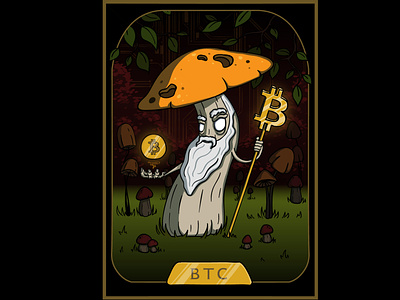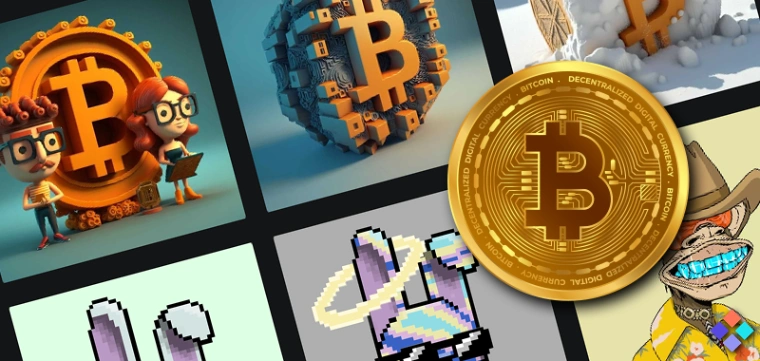Sotheby’s has embarked on its inaugural auction of Bitcoin Ordinals NFTs, featuring three distinct pieces from the BitcoinShrooms collection, consisting of 222 unique works. The announcement of this online auction was made by Sotheby’s metaverse division on X, and the bidding window extends from December 6 to December 13.
The creative mind behind the BitcoinShrooms collection is Shroomtoshi, an ostensibly early Bitcoin enthusiast and an anonymous digital artist. The collection, presented in pixelated art form, aims to chronicle the narrative of blockchain, encapsulating its history, culture, and fundamental technical aspects, as outlined by Sotheby’s.
We’re thrilled to present our inaugural Bitcoin Ordinals sale, featuring @BitcoinShrooms 🍄 pic.twitter.com/UkX5jsfKLh
— Sotheby’s Metaverse (@Sothebysverse) December 6, 2023
The three featured lots include “S” symbolizing “Self-Sovereignty,” “Sovereign Individual” drawing inspiration from the Bitcoin-related book by James Dale Davidson and William Rees-Mogg, and “BIP39 Seed,” a nod to the commonly used 12 to 24 recovery seed phrase backups.
As of now, there have been a total of 107 bids across the lots, with “S” garnering the highest interest with 44 bids. Initially estimated in the $20,000 to $30,000 range with no reserve, the current bids have already surpassed these figures, reaching $42,000 for “S,” $50,000 for “Sovereign Individual,” and $28,000 for “BIP39 Seed.”
Shroomtoshi provided insights into the motivation behind the BitcoinShrooms collection, describing it as a pixelated retrospective of the first 13 years of Bitcoin. The artwork serves as a tribute to the 8-bit style of art, invoking a hint of nostalgia for the 90s, while also serving as a means to disseminate art across numerous SSDs worldwide, a unique form of cyber-vandalism.
Moreover, it functions as a tool to raise awareness about Bitcoin’s core principles and simultaneously serves as an ironic expression of frustration towards what the artist perceives as the cryptocurrency’s annoying pop elements and aberrations. In essence, Shroomtoshi views the collection as a form of gratitude towards collaborators and mentors, as well as a remembrance of those who have contributed to Bitcoin’s journey but are no longer present.
In January, Casey Rodarmor introduced the Bitcoin Ordinals protocol, revolutionizing the storage and trading of digital content on the Bitcoin network. This innovative approach leverages satoshis, the smallest units of bitcoin, to etch NFTs, BRC-20 tokens, and diverse data directly onto the blockchain, transforming each item into a distinctive and tradable asset.
Though “Ordinals” and “inscriptions” are often used interchangeably, it’s crucial to note that an ordinal serves as a unique serialized identifier for an individual satoshi, while an inscription represents the content or data linked to that specific satoshi.
In recent weeks, BRC-20-style tokens have extended their presence to various blockchains, such as Ethereum, Solana, Near, Polygon, Celo, and Fantom. This expansion has led to a surge in transactions, sparking a broader discussion about the utilization of inscriptions within the crypto community.
Sotheby’s, a seasoned player in the NFT auction space, has a history of notable sales, including Dmitri Cherniak’s “The Goose” NFT for $6.2 million in June, 37 “Grails” NFTs for over $5 million that same month, and 500 pieces of “Themes and Variations” generative art for $1.2 million in July.
Related: NFT Market Thaws: A Ray of Hope, Discover More Inside
Despite its success, Sotheby’s faced legal challenges in August, becoming embroiled in a class action lawsuit related to Bored Apes and MoonPay. The auction house was accused of misleadingly stating that a “traditional” art collector had acquired 101 Bored Apes for $24.4 million when, in reality, the buyer was the now-defunct crypto exchange FTX.
In October, crypto hardware wallet manufacturer Ledger entered into an “exclusive” partnership with Sotheby’s, providing wallets to the auction house’s top NFT collectors, further bridging the worlds of traditional auctions and cutting-edge blockchain technology.








